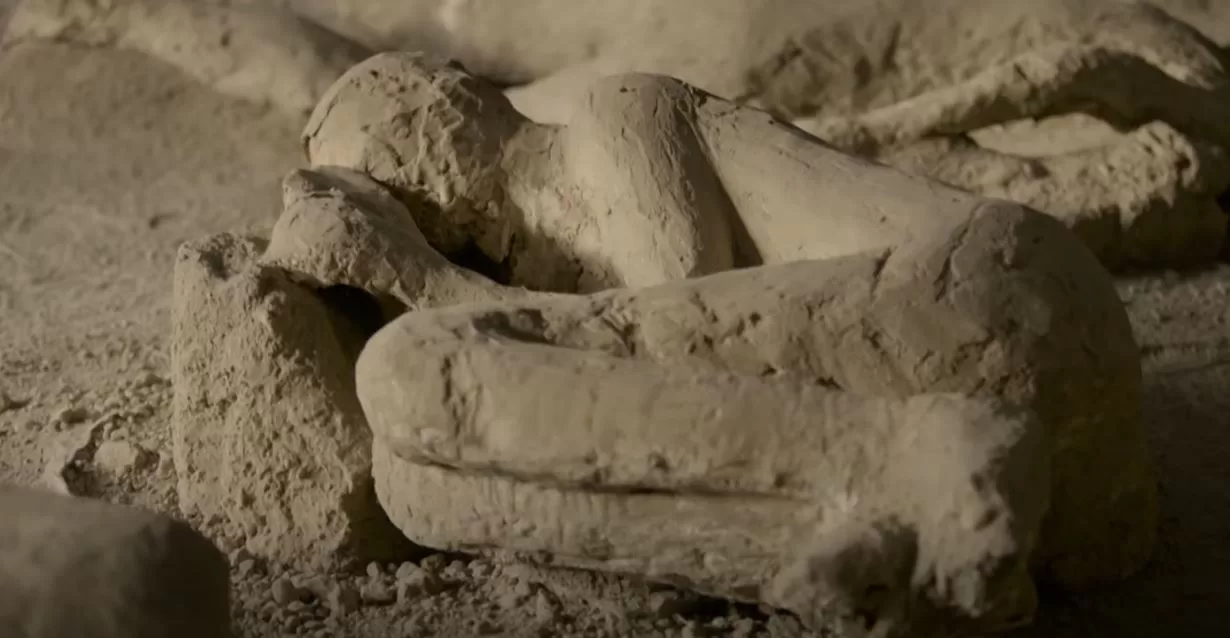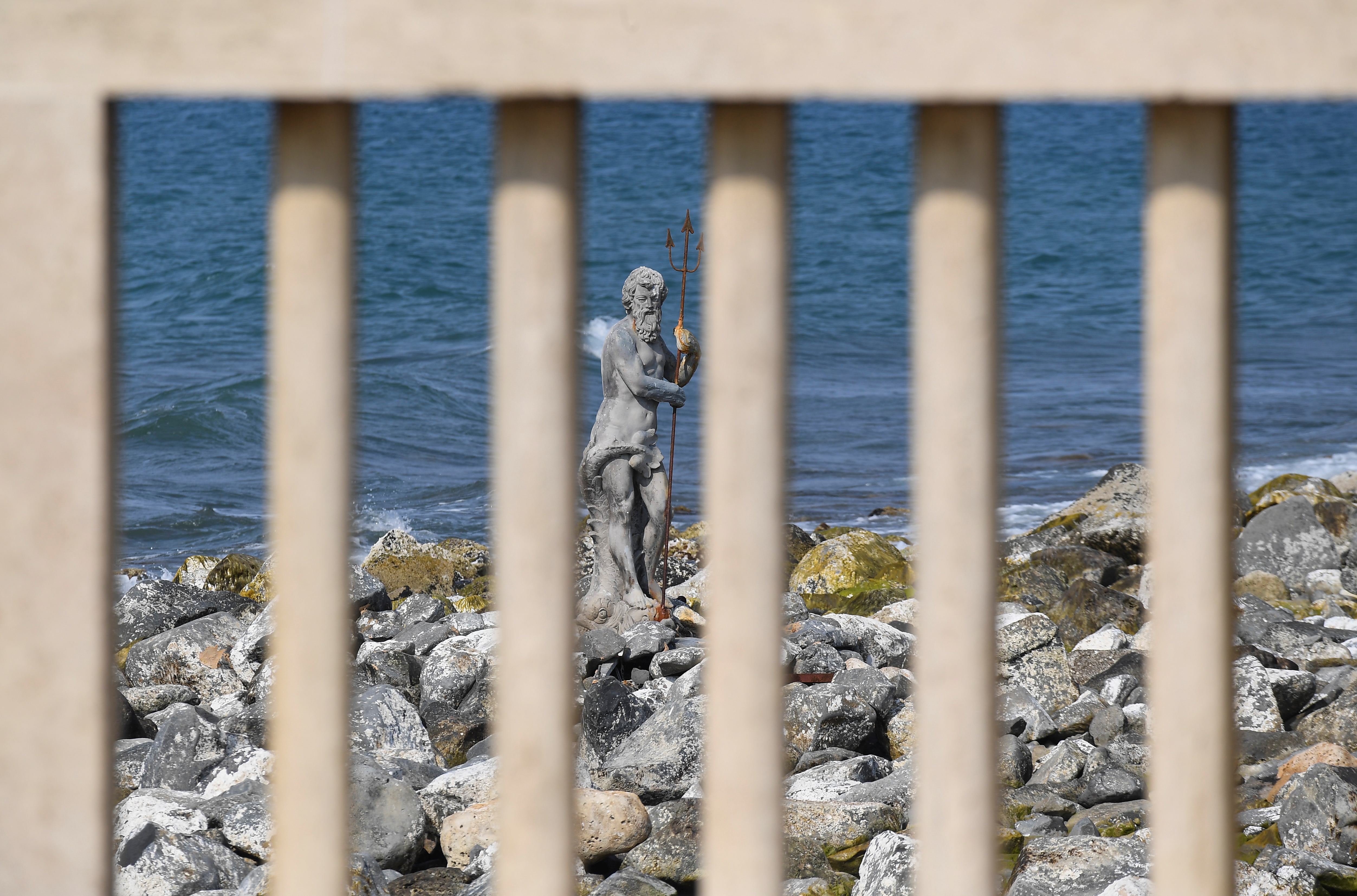It’s often been depicted that there were no survivors following Mount Vesuvius’ eruption in A.D. 79 but the latest finds suggest that narrative isn’t entirely true.
A new PBS documentary titled “Pompeii: The New Dig” looks at how it was increasingly likely that not everyone in the city of Pompeii diminished beneath the relentless onslaught of ash and rock.
In a recently released trailer for the show, archaeologists discover new found ruins in Pompeii that reveal a city frozen in time.
Amongst all the rubble, excavators unearth signs that life continued following the volcanic eruption, suggesting people managed to survive the natural disaster.
One man in the trailer for the programme explained how these findings “tripled” what people believed Pompeii’s population was.
Described as “the biggest archaeological excavation in Pompeii for a generation”, new evidence points strongly towards the possibility that people may have escaped.
The human remains previously found in Pompeii account for only a fraction of its population.
Many objects such as carts and horses, ships, and strongboxes were all missing, leading to theories that some people must have used them to escape.
This alone suggests many people could well have fled in time to survive.
But with it never being a top priority to search for these people, no evidence has been provided to back up those claims.
Now, however, it appears a major breakthrough has been made.
Separate research conducted by PBS also strengthens claims of there being survivors.
Using a method that involved searching for Roman names unique to Pompeii in its surrounding communities following the eruption, evidence of over 200 survivors in 12 cities was located.
These municipalities are primarily in the general area of Pompeii, with it appearing as though most survivors stayed as close as they could to the city.
Preferring to settle with other survivors, they relied on social and economic networks from their original cities as they resettled, PBS claim.
The report adds that some of the families that escaped apparently went on to thrive in their new communities.
The Caltilius family resettled in Ostia, where they founded a temple to the Egyptian deity Serapis, and members married into another family of escapees, the Munatiuses.
Together, they created a wealthy, successful extended family, it is claimed.
However, things weren’t quite as rosy for others who are believed to have escaped.
Fabia Secundina ended up in Puteoli, known to be the second-busiest port city in Roman Italy.
She married a gladiator, called Aquarius the retiarius, but was left in dire financial straits after he died at the age of 25.
Three other very poor families from Pompeii – the Avianii, Atilii and Masuri families – survived and settled in a small, poorer community about ten miles east of Pompeii called Nuceria.
It comes after freshly unearthed, 2,000-year-old, graffiti suggests brutal gladiator battles in Ancient Rome weren’t just an adults sport.
Archeologists believe the drawings were made by children as young as five, suggesting they had attended bloody gladiator battles in the city.
Experts believe children were drawing what they had witnessed in an effort to process the trauma of what they saw.
Where was Pompeii and how many people died?

Pompeii was an ancient city in Italy that was nearly wiped off the map by a catastrophic volcanic eruption.
In 79 AD, the volcano Mount Vesuvius erupted, burying the Roman city under a thick carpet of ash.
Where was Pompeii?
Pompeii was once a very prosperous ancient Roman city on the Gulf of Naples, in Italy’s Campania region.
It was home to 11,000 people and boasted a complex water system, amphitheatre, gymnasium and even a port.
How was Pompeii destroyed?
On August 4, in the year 79 AD, Vesuvius erupted in one of the most violent volcanic eruptions in human history.
It shot stone, ash and volcanic gases as high as 21 miles into the sky at tens of thousands of cubic metres every second.
The thermal energy released was said to be a hundred thousand times that of the nuclear blasts at Hiroshima-Nagasaki.
However, the city was actually preserved under volcanic debris for centuries, until it was discovered in the late 16th century.
How many people died?
The volcanic debris as a result of the eruption of Mount Vesuvius turned people to ash where they stood.
Experts now believe that the heat from the volcano boiled people’s blood, making their heads explode.
Around 2,000 people are believed to have been killed in Pompeii, which had a population of 11,000 at the time.
To this day, roughly a third of the lost city still remains to be cleared.








